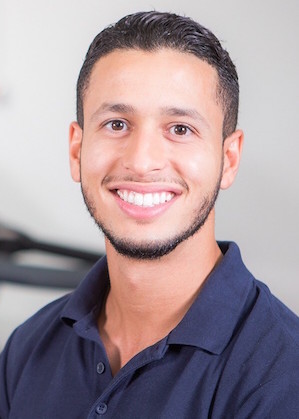If you have been diagnosed with a herniated disc, you have probably followed your doctor's recommendations, taken medications, seen a physiotherapist or osteopath, and done exercises. However, months, or even years, years Later, your pain persists. Although some people notice improvement, many still do not feel the same as they did before their injury.
In this article we are going to talk about 5 main reasons that may explain why your pain persists following a herniated disc. These causes are often overlooked, but understanding these factors can make all the difference in your recovery.
Important points to remember:
- You may not be stimulating your discs enough.
- You may be overloading your intervertebral discs.
- You can't find the balance between rest and exercise.
- You are doing the wrong exercises for your condition.
- You underestimate other factors that influence healing, such as diet or sleep.
1. You may not be stimulating your discs enough
To heal, your intervertebral discs need to be stimulated. The prolonged rest or avoiding movement altogether can actually make things worse. The example of my patient, whom we will call Mr. X, illustrates this point perfectly. Mr. X had decided to never bend over again to “let his discs heal.” After a year of avoiding any bending movements, his back was frozen in extension, his pain had worsened, and he had developed a fear of movement (kinesophobia). His discs had never healed properly.
The importance of stimulation
The astronauts in zero gravity are another example. You would think that without gravity, their discs would be less stressed, but studies show that they are actually 2,8 times more likely to develop a herniated disc. This shows that the disk needs stimulation to stay in good health.
2. You may be overloading your disks
Overstimulation is equally problematic. Overloading your disks can cause inflammation and worsening of the herniated disc. Take the example of the famous bodybuilder Ronnie Coleman, who suffered multiple herniated discs from years of extreme lifting. He had to undergo 13 surgeries and today he moves around in a wheelchair.
If you play a sport or physical activity that puts too much strain on your back, such as intense bodybuilding or running, it is possible that you overload your disks without knowing it. Finding the right balance between stress and rest is essential.
3. You can't find the balance between rest and exercise
Finding the right balance between rest and exercise is crucial in the treatment of herniated discs. Imagine lifting too light a weight: there will be no progress, because the stimulus is insufficient. Conversely, lifting too heavy a load can lead to injury. Between these two extremes is a adaptation zone, where stimulation is sufficient to encourage healing without causing inflammation.
Progressive overload
This progressive overload is essential to stimulate the intervertebral discs and surrounding tissues without damaging them. The challenge is to find adapted exercises to your condition and to them progress over time.
4. You're doing the wrong exercises
The poorly adapted exercises to your condition can slow the healing of your herniated disc. If you are extremely flexible and suffer from a lumbar instability, flexibility exercises may make your condition worse. In this case, flexibility exercises enhancement are needed to stabilize your spine.
Conversely, if you are very steep, exercisesrelaxation should be a priority to improve your flexibility and relieve pressure on your discs.
5. You underestimate other factors that influence healing
Healing a herniated disc does not depend solely on direct treatments on the spine. It is also essential to pay attention to external factors such as:
- Diet : A nutrient-rich diet can promote recuperation.
- The sleep : Good sleep allows tissues to repair themselves.
- The stress : Stress increases the perception of pain and delays healing.
- Misconceptions : Limiting beliefs, such as Mr. X's belief that bending over would make his hernia worse, can also hinder the healing process.
By adjusting these aspects of your lifestyle, you will optimize your chances of fully recovering.
How to speed up your healing?
To help you find that balance between stimulation et repos, I invite you to follow my 21 Day Back Pain Program, a free program that includes adapted, progressive and safe exercises. This program has been designed to treat herniated disc taking into account all the factors mentioned above.
👉 Sign up here for the 21 Day Back Pain Program
To go even further, you can access Lombafit Studio, a comprehensive platform offering guided exercise sessions to improve your back health.
👉 Discover Lombafit Studio here
References
- Wong, A.Y., Karppinen, J., & Samartzis, D. (2017). “Low back pain in older adults: risk factors, management options and future directions”. Scoliosis and Spinal Disorders, 12 (1). Link to the article
My name is Anas Boukas and I am a physiotherapist. My mission ? Helping people who are suffering before their pain worsens and becomes chronic. I am also of the opinion that an educated patient greatly increases their chances of recovery. This is why I created Healthforall Group, a network of medical sites, in association with several health professionals.
My journey:
Bachelor's and Master's degrees at the University of Montreal , Physiotherapist for CBI Health,
Physiotherapist for The International Physiotherapy Center


